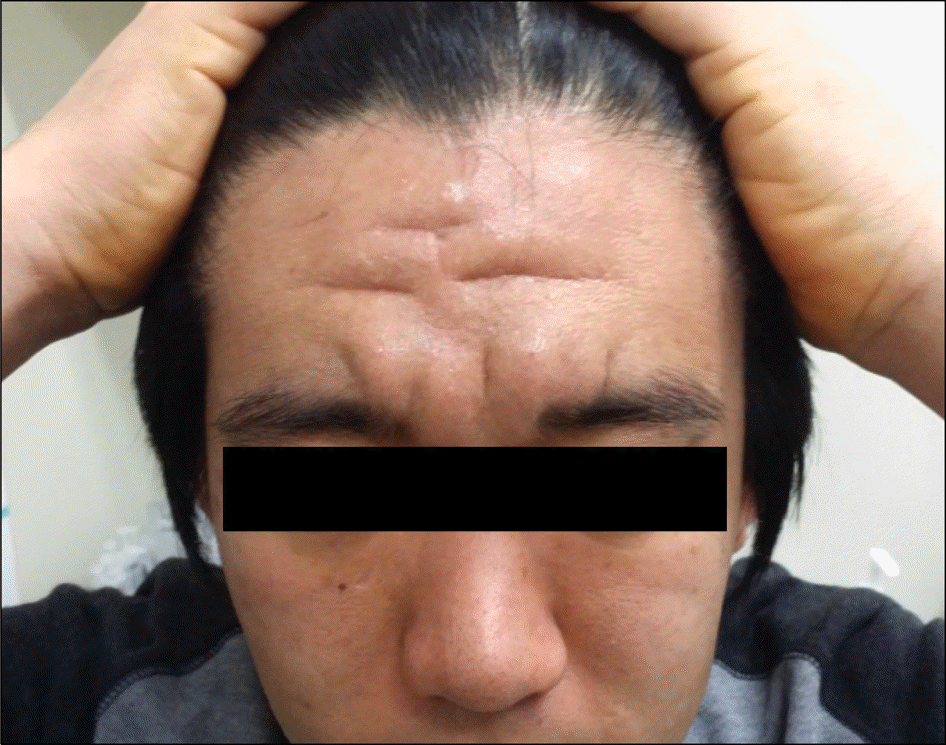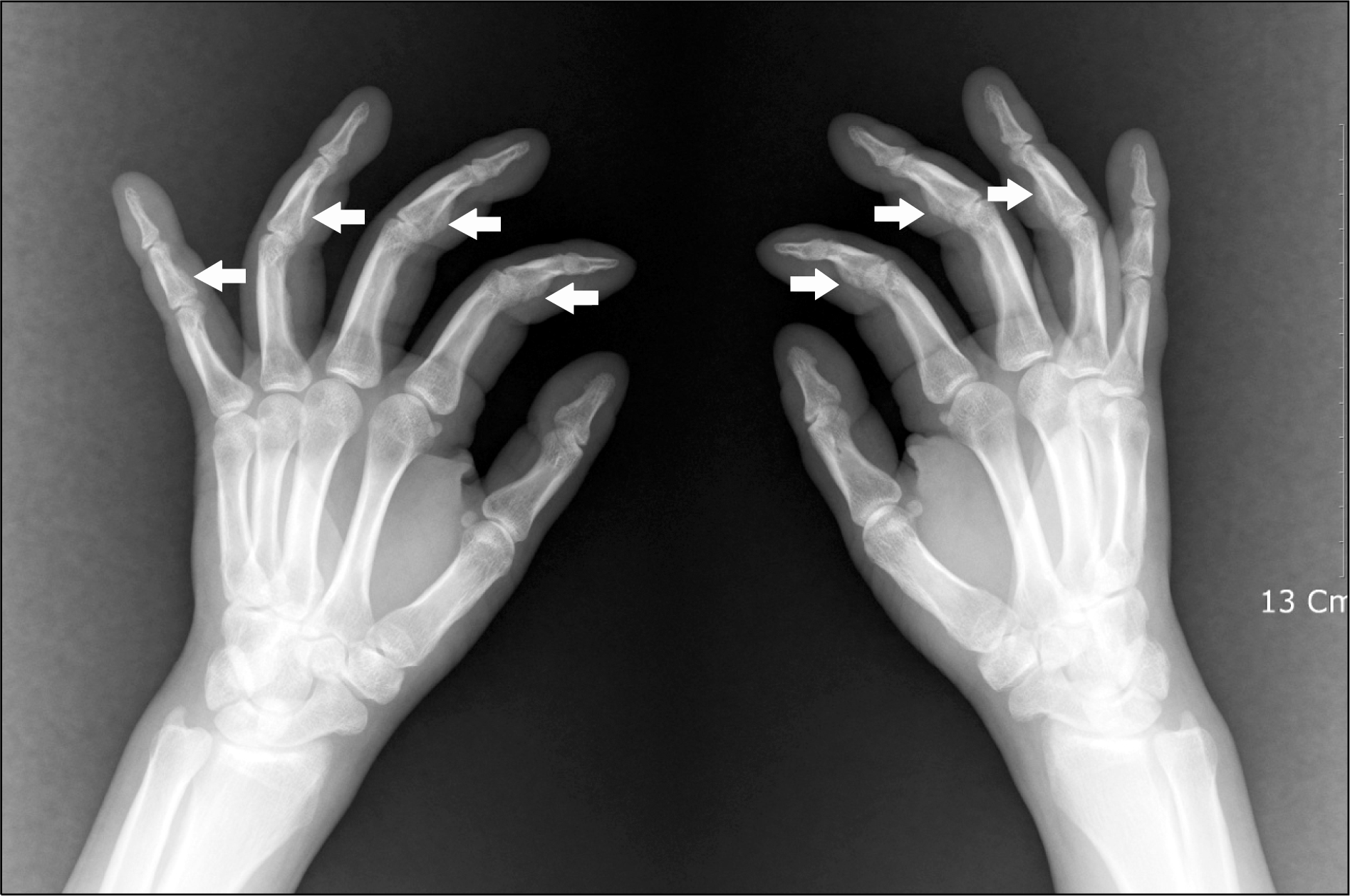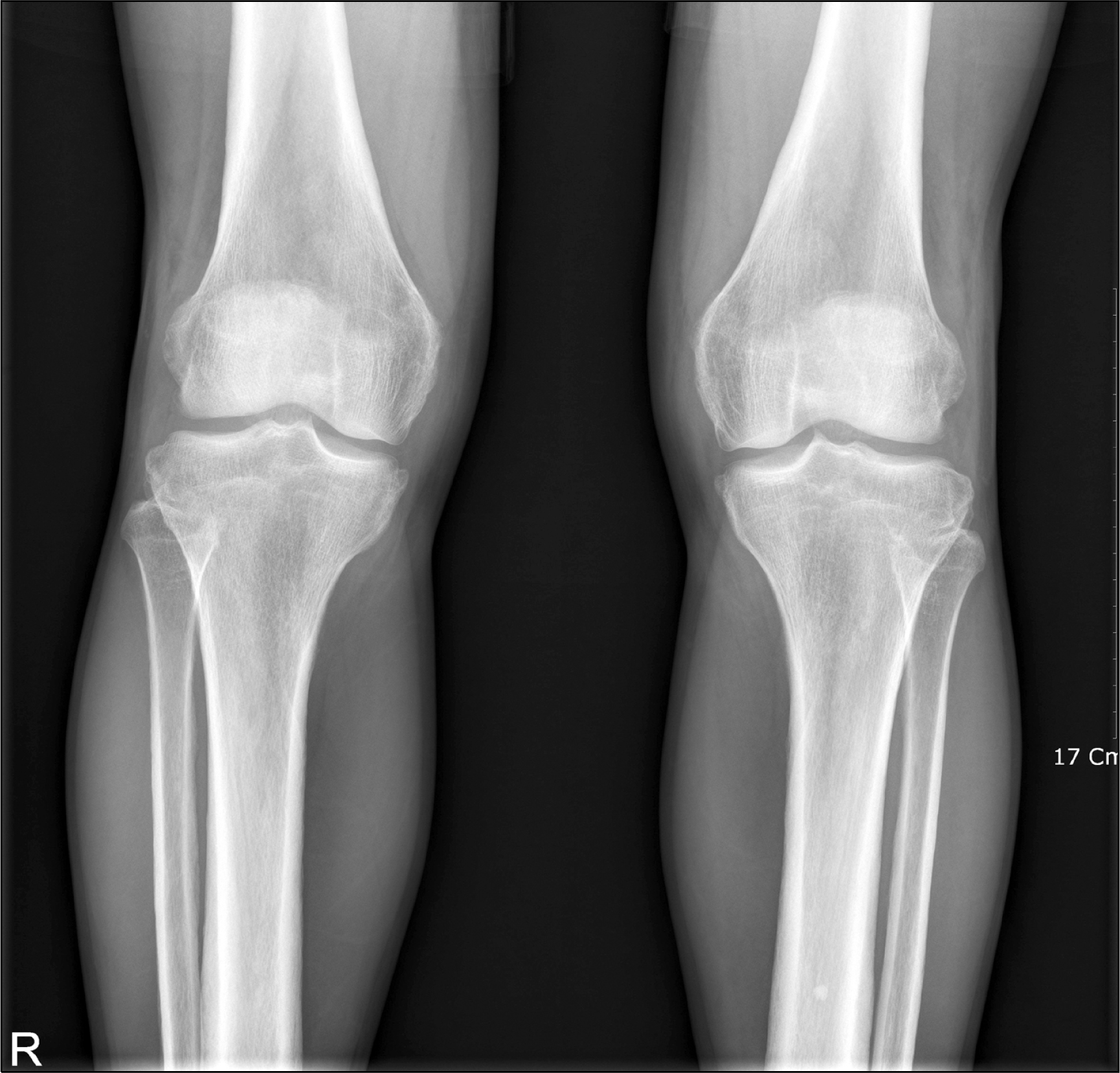Abstract
Pachydermoperiostosis (PDP) is a primary hypertrophic osteoarthropathy characterized by digital clubbing, pachydermia, and periostosis, which is inherited as an autosomal dominant or recessive trait. We report on a patient suffering from bilateral knee arthritis for 6 years who was newly diagnosed as PDP. PDP was confirmed by bilateral digital clubbing, hyperhidrosis, and cutis verticis gyrata, findings of pachydermatosis on the forehead and scalp, X-ray findings of proliferative periostitis. This case indicates that PDP is one of several possible rare diseases that should be considered in patients with undifferentiated arthritis.
REFERENCES
1. Uppal S, Diggle CP, Carr IM, Fishwick CW, Ahmed M, Ibrahim GH, et al. Mutations in 15-hydroxyprostaglandin dehydrogenase cause primary hypertrophic osteoarthropathy. Nat Genet. 2008; 40:789–93.

2. Zhang Z, Xia W, He J, Zhang Z, Ke Y, Yue H, et al. Exome sequencing identifies SLCO2A1 mutations as a cause of primary hypertrophic osteoarthropathy. Am J Hum Genet. 2012; 90:125–32.

3. Sasaki T, Niizeki H, Shimizu A, Shiohama A, Hirakiyama A, Okuyama T, et al. Identification of mutations in the prostaglandin transporter gene SLCO2A1 and its phenotype-gen-otype correlation in Japanese patients with pachydermoperiostosis. J Dermatol Sci. 2012; 68:36–44.

4. Matucci-Cerinic M, Lotti T, Jajic I, Pignone A, Bussani C, Cagnoni M. The clinical spectrum of pachydermoperiostosis (primary hypertrophic osteoarthropathy). Medicine (Baltimore). 1991; 70:208–14.

5. Jajic Z, Jajic I, Nemcic T. Primary hypertrophic osteoarthropathy: clinical, radiologic, and scintigraphic characteristics. Arch Med Res. 2001; 32:136–42.
6. Oikarinen A, Palatsi R, Kylmäniemi M, Keski-Oja J, Risteli J, Kallioinen M. Pachydermoperiostosis: analysis of the connective tissue abnormality in one family. J Am Acad Dermatol. 1994; 31:947–53.

8. Sinibaldi L, Harifi G, Bottillo I, Iannicelli M, El Hassani S, Brancati F, et al. A novel homozygous splice site mutation in the HPGD gene causes mild primary hypertrophic osteoarthropathy. Clin Exp Rheumatol. 2010; 28:153–7.
9. Vogl A, Goldfischer S. Pachydermoperiostosis. Primary or idiopathic hypertrophic osteoarthropathy. Am J Med. 1962; 33:166–87.
10. Rimoin DL. Pachydermoperiostosis (idiopathic clubbing and periostosis): genetic and physiologic considerations. N Engl J Med. 1965; 272:923–31.
11. Akoglu H, Akoglu G, Yuksel C, Dede F, Yenigun EC, Ozturk R, et al. Pachydermoperiostosis with myelofibrosis and renal amyloid A amyloidosis. J Clin Rheumatol. 2009; 15:414–6.

12. Sinha GP, Curtis P, Haigh D, Lealman GT, Dodds W, Bennett CP. Pachydermoperiostosis in childhood. Br J Rheumatol. 1997; 36:1224–7.

13. Akdeniz BG, Seçkin T. Periodontal and alveolar bone abnormalities associated with pachydermoperiostosis. Periodontal Clin Investig. 2001; 23:5–10.




 PDF
PDF ePub
ePub Citation
Citation Print
Print







 XML Download
XML Download